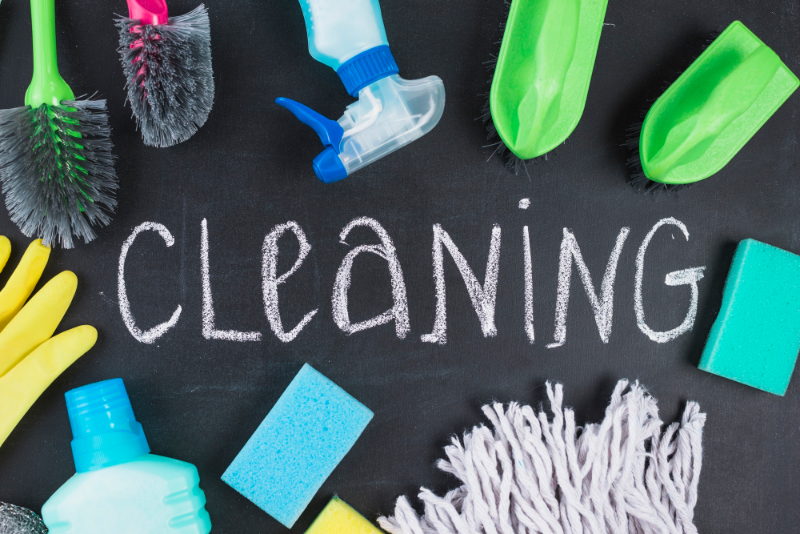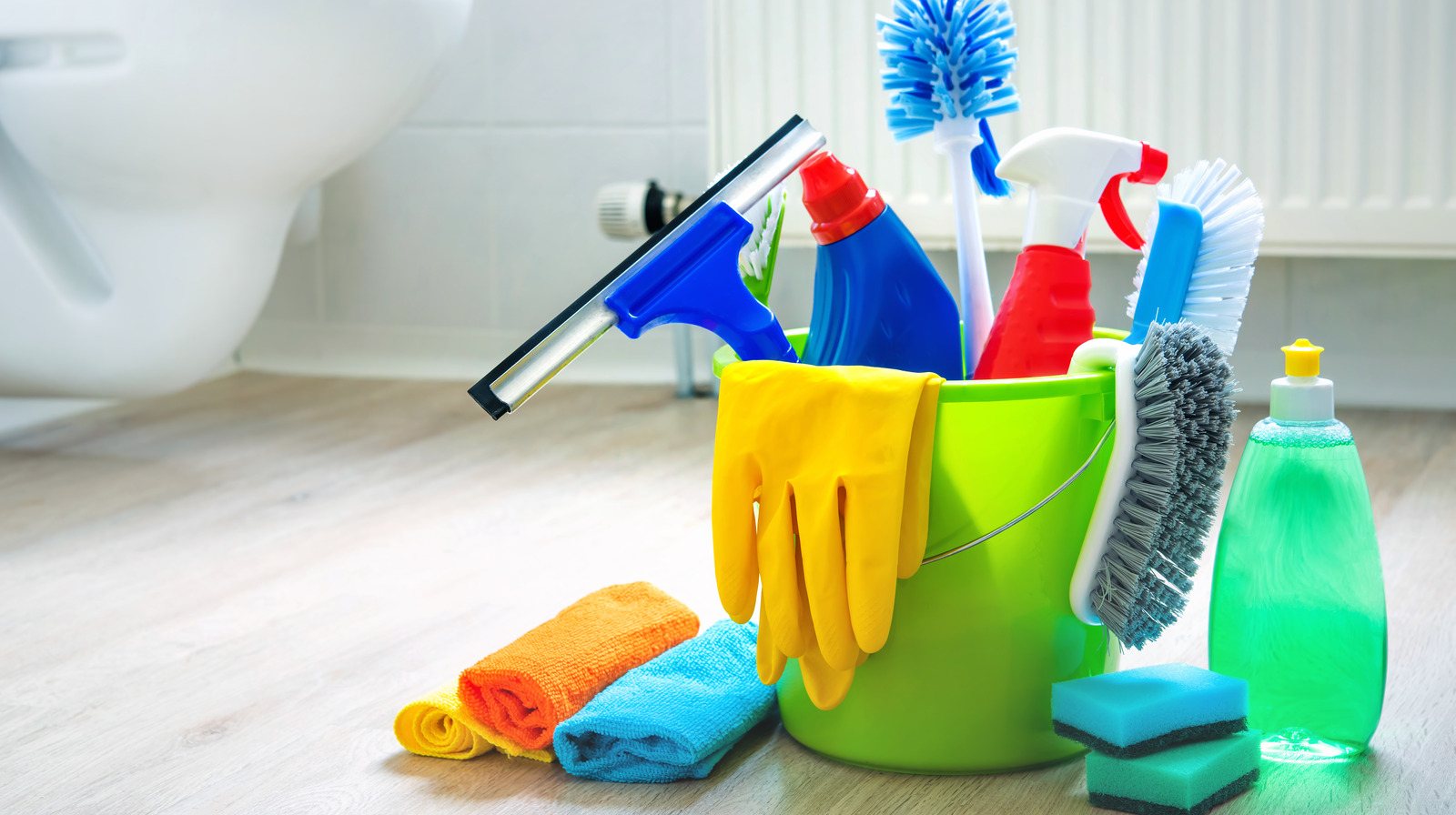The Ultimate Tip to Everyday Cleaning: Exactly How to Scrub the Surfaces, Vacuum Carpets, and Clear Out Any Clutter
The Ultimate Tip to Everyday Cleaning: Exactly How to Scrub the Surfaces, Vacuum Carpets, and Clear Out Any Clutter
Blog Article
Comprehending the Need for Extensively Disinfecting and Sanitizing Often Touched Surface Areas in High-Traffic Areas
In the world of public health and safety, the careful sanitation and sanitization of frequently touched surfaces in high-traffic locations stand as critical measures in preventing the spread of damaging virus. By discovering the various aspects of surface sanitation, from the risks connected with ignoring cleansing methods to the effective techniques that can be utilized, a more clear understanding emerges of the important role these techniques play in guarding public health.
Relevance of Surface Sanitation
Stressing the thorough disinfection of high-traffic surfaces is important in keeping a sanitary atmosphere and stopping the spread of hazardous virus. High-touch surface areas such as door manages, light buttons, elevator buttons, and kitchen counters function as reproducing premises for infections and microorganisms. Regular disinfection of these surfaces is imperative to lower the danger of contamination and transmission of diseases.
By implementing a robust disinfection method, companies and establishments can develop a more secure atmosphere for site visitors, customers, and workers. Correct surface disinfection not only mitigates the spread of infectious illness but also infuses self-confidence in the sanitation and safety and security of the premises. This positive method shows a commitment to health and health, which is especially crucial in high-traffic areas where the possibility of direct exposure to pathogens is enhanced.
In addition, surface sanitation plays a vital function in general infection control methods. Integrated with hand hygiene methods, wearing masks, and preserving physical distancing, extensive sanitation of high-touch surface areas develops a detailed protection against the transmission of dangerous microorganisms. Prioritizing surface area sanitation is an essential component of an all natural approach to health and wellness in common rooms.
Dangers of Ignoring Cleaning Practices
Neglecting extensive sanitation of high-traffic surfaces significantly increases the risk of viral and bacterial contamination, presenting a serious risk to the health and wellness of people often visiting these rooms. Failure to implement appropriate cleaning techniques can result in the buildup and spread of harmful pathogens, consisting of bacteria and infections, on frequently touched surfaces such as doorknobs, handrails, lift switches, and kitchen counters.

In addition, neglecting the significance of thorough cleaning not just endangers the wellness of individuals but likewise undermines efforts to keep a sanitary and tidy setting. It is important to identify the importance of appropriate disinfection methods in preventing the spread of infections and safeguarding public health and wellness.
Efficient Sanitation Methods
To keep optimum tidiness and reduce the threat of contamination on high-traffic surface areas, employing reliable sanitation techniques is essential. One of the most typical and efficient disinfection methods is utilizing chemical anti-bacterials.
Another effective approach is using UV-C light. UV-C light has actually been revealed to be reliable in killing a vast range of microbes by disrupting their DNA framework, therefore stopping them from replicating. Nonetheless, it is vital to use UV-C light correctly, guaranteeing that the appropriate strength and direct exposure time are used to attain the desired sanitation results.
Furthermore, using heavy steam cleaning as a disinfection method can be highly effective, particularly on surface areas that are heat-resistant. Steam can penetrate permeable surfaces and kill bacteria, infections, and various other pathogens properly. When making use of steam cleaning, it Scrub the Surfaces is vital to make sure that the surface area gets to the needed temperature level for an adequate amount of time to assure correct sanitation.
Influence On Public Health
The maintenance of high standards of sanitation and disinfection on high-traffic surfaces plays an essential role in safeguarding public wellness. Frequently touched surfaces in locations with high tramp, such as doorknobs, hand rails, elevator switches, and bathroom centers, serve as breeding grounds for dangerous pathogens.
Efficient hygiene methods not only shield individuals from dropping sick however likewise contribute to the total health of society. Public wellness authorities stress the relevance of preserving tidy settings to stop outbreaks and consist of the spread of health problems. In high-traffic areas like airport terminals, institutions, medical facilities, and public transport systems, the influence of extensive disinfection procedures can not be understated. Prioritizing the sanitization of frequently touched surface areas is a positive approach to promoting public wellness and improving the safety of people in common spaces.
Executing Routine Cleansing Methods
Quickly setting up and sticking to a regular routine of cleansing procedures is paramount for maintaining the cleanliness and safety of high-traffic surfaces. Normal cleansing protocols are crucial in stopping the accumulation of bacteria and virus on often touched surface areas, especially in areas with high foot traffic. By implementing a methodical strategy to cleaning, companies can properly decrease the risk of illness transmission and create a much healthier setting for staff members, customers, and the general public.
To establish an efficient cleansing timetable, it is important to recognize high-traffic locations that need regular attention. These locations may consist of doorknobs, handrails, elevator switches, restroom centers, and common tools. Implementing a routine cleaning program that targets these surfaces several times a day can substantially minimize the spread of harmful microorganisms and viruses.
Furthermore, using proper cleaner and disinfectants is vital to making certain that surface areas are completely sanitized. Routine training of cleaning personnel on proper cleaning methods and the value of adherence to the cleansing timetable is also essential in maintaining a hygienic setting. By focusing on regular cleansing protocols, companies can promote the health and wellness and well-being of people who interact with these high-traffic surfaces.

Final Thought
To conclude, it is vital to focus on thorough sanitation and sanitization of regularly touched surface areas in high-traffic areas to avoid the spread of damaging pathogens and keep public wellness. Disregarding appropriate cleaning techniques can increase the danger of contamination and transmission of diseases. By implementing normal cleansing protocols and utilizing effective disinfection methods, we can develop a much safer setting for everybody (Vacuum Carpets). It is essential to acknowledge the value of preserving tidy surfaces in high-traffic locations to make sure the well-being of the area.
In the realm of public wellness and security, the precise disinfection and sanitization of often touched surfaces in high-traffic areas stand as extremely important actions in stopping the spread of harmful pathogens. By exploring the numerous elements of surface area disinfection, from the risks linked with neglecting cleaning protocols to the effective techniques that can be used, a clearer understanding arises of the crucial function these practices play in securing public health.Additionally, using vapor cleansing as a disinfection technique can be extremely efficient, especially on surfaces that are heat-resistant. When using vapor cleansing, it is vital to guarantee that the surface reaches the called for temperature level for a sufficient amount of time to assure correct sanitation.
In final thought, it is essential to prioritize detailed disinfection and sanitization of frequently touched surface areas in high-traffic locations to avoid the spread of dangerous virus and preserve public health.
Report this page